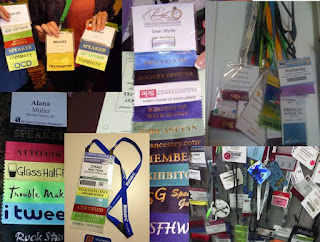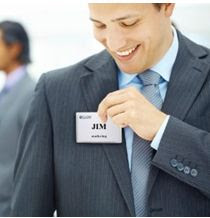According to research from Successful Meetings magazine, when faced with budget cutbacks 49% of meeting planners cut the F&B budget first.
And yet anecdotally, next to conference rooms being too cold, food is the top complaint from attendees on post-event surveys.
As a conference organizer, I understand that budgets are not always based on the realities of an optimal customer experience. Most event managers (and their leadership) view food as something you have to provide, but fail to consider it as an integral part of the experience.
Since the intent of this blog is to wax philosophical about ideas (rather than prescribe how things "should" be done), here's my idea: Why not revolutionize the way conference food is brought to attendees?
Cruise ships excite their guests with massive buffet options. Food courts satiate mall-goers and air travelers with variety, speed, and price. And stadiums have even begun to wow their sports fans with amazing offerings. So what can we learn from these large-group-serving colleagues? It's about expectations and the experience.
When you go on a cruise, you know you're getting crazy buffets with mounds of food and a variety of restaurant offerings to choose from, usually included in the price of your ticket.
When you go to the mall or the airport, you know you'll get fast food, quickly, and you can pretty much bet that you'll have a choice of greasy fried food, salads, Asian options, and probably that ever-pervasive smell of warm pretzels.
And when you go to the stadium you may get that Club level food court, the hot dog & nachos stand, or the sit-down sports bar.
Right now, as you think about conference food, you are probably conjuring up lines of chafing dishes with food that started out great, but has deteriorated as throngs of attendees attempt to dig into the now-crusty casseroles. Or maybe you're thinking of the box lunch with the rock-hard sandwich, itty bitty whole apple, package of chips, and individually-wrapped pickle. Or if you're a vegetarian, you're remembering that every time you make it to the only vegetarian option on the buffet line, it's already gone because (shocker!) meat-eaters eat vegetables, too!
What if you looked forward to meeting a colleague for breakfast because it was like a coffeehouse with some proteins, some sweets, some hot tea, and some coffee, and the environment elicited a cozy atmosphere, rather than that of an aircraft carrier?
What if you were excited to get to lunch because you could sit with colleagues (not yell across a 72" round with strangers), or join an informal education session, or even hang out in a TV room to catch up on CNN headline news (a la The Varsity in Atlanta, GA)?
There's bound to be a creative way to bring the enjoyment back to conference meals; even for those 20,000+ person events. I encourage you to work with your conference facility team, your logistics teams, and your chef, and make food a universally AWESOME experience again!



